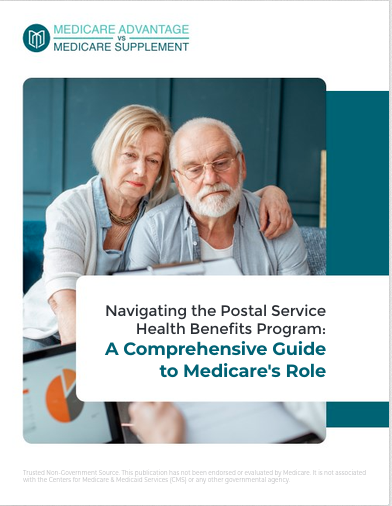Key Takeaways
-
Medicare Advantage plans come with various costs, including premiums, deductibles, copayments, and out-of-pocket limits, all of which impact your monthly budget.
-
Understanding how these costs add up helps you make informed decisions when choosing or managing your Medicare Advantage plan.
Breaking Down the Costs of Medicare Advantage
Medicare Advantage, also known as Medicare Part C, bundles hospital and medical coverage into a single plan, often with additional benefits. While it may seem like an all-in-one solution, understanding the cost structure is key to ensuring it fits within your budget.
Costs associated with Medicare Advantage plans can vary widely, and knowing what to expect can prevent unpleasant surprises. Here’s what you should consider when estimating your monthly expenses.
Monthly Premiums: A Fixed Cost to Consider
The first and most predictable cost is your monthly premium. Some Medicare Advantage plans charge a premium on top of your Medicare Part B premium. Others may offer lower premiums, but this often comes with higher out-of-pocket costs elsewhere.
Premiums remain a constant part of your budget, so make sure you account for them in your monthly expenses. Even if a plan advertises a lower premium, it’s important to balance this against other costs, such as copayments and deductibles, to determine the overall affordability.
Deductibles: The Upfront Cost Before Coverage Kicks In
A deductible is the amount you must pay out of pocket before your Medicare Advantage plan starts covering healthcare costs. Deductibles can apply to different services, such as hospital stays, doctor visits, or prescription drugs.
While some plans may have lower deductibles, others require you to pay a higher amount upfront before cost-sharing begins. Consider how often you anticipate needing medical services, as a higher deductible may mean you’ll pay more before you start seeing the benefits of your plan.
Copayments and Coinsurance: The Cost Per Visit
After meeting your deductible, you’ll likely have copayments or coinsurance for different services.
-
Copayments are fixed amounts you pay per visit or service. For example, you may have a set copay for primary care visits, specialist appointments, or urgent care.
-
Coinsurance is a percentage of the cost of a service that you must pay out of pocket. For instance, if your plan has a 20% coinsurance for hospital stays, you’ll pay 20% of the total bill while the plan covers the remaining 80%.
These costs add up quickly, especially if you require frequent medical visits, specialist care, or hospitalization. Be sure to review your plan’s summary of benefits to understand how these costs may impact your budget.
Maximum Out-of-Pocket Limit: The Safety Net
Every Medicare Advantage plan has a maximum out-of-pocket (MOOP) limit, which sets a cap on how much you’ll pay for covered services in a given year. Once you reach this limit, your plan covers 100% of the remaining covered costs for the year.
This is an important feature, as it helps protect you from excessive medical expenses. However, reaching the MOOP can still mean spending a significant amount throughout the year. Budgeting for this possibility ensures that you’re financially prepared if unexpected medical needs arise.
Prescription Drug Costs Under Medicare Advantage
Many Medicare Advantage plans include prescription drug coverage, but these costs vary depending on your medications and plan specifics.
Understanding Drug Tiers
Medications are often grouped into tiers, with each tier determining the cost:
-
Tier 1: Generic drugs (lower cost)
-
Tier 2: Preferred brand-name drugs (moderate cost)
-
Tier 3 and beyond: Non-preferred or specialty drugs (higher cost)
Out-of-Pocket Prescription Costs
Your prescription drug costs will include:
-
Deductibles: Some plans require you to pay a certain amount before coverage begins.
-
Copayments or coinsurance: The cost per prescription can be a fixed amount or a percentage of the total drug cost.
-
Annual out-of-pocket cap: In 2025, Medicare has introduced a $2,000 out-of-pocket cap for prescription drugs, limiting how much you spend on medications within the year.
Being aware of these costs helps you plan ahead, particularly if you require ongoing prescriptions.
Network Restrictions and Cost Implications
Medicare Advantage plans often have provider networks, meaning you may face additional costs if you see doctors or visit hospitals outside of your plan’s network.
Types of Networks and Their Costs
-
Health Maintenance Organization (HMO) plans: Typically require you to use in-network providers, with few exceptions.
-
Preferred Provider Organization (PPO) plans: Allow more flexibility but often come with higher costs for out-of-network care.
Before enrolling in a plan, ensure that your preferred doctors, hospitals, and specialists are in-network. Out-of-network services can lead to significantly higher out-of-pocket expenses.
Additional Benefits and Their Hidden Costs
Many Medicare Advantage plans offer additional benefits, such as dental, vision, and hearing coverage. While these extras can be valuable, they may come with restrictions or additional costs.
What to Look For
-
Limitations on services: Some plans only cover basic cleanings for dental or limited eyewear allowances.
-
Copayments for services: Even if covered, you may still need to pay for part of the cost.
-
Annual benefit caps: There may be a maximum dollar amount for these services each year.
Understanding the fine print helps you avoid unexpected expenses when using these extra benefits.
How to Budget for Medicare Advantage Costs
Given the different cost components of Medicare Advantage, it’s crucial to budget accordingly. Here’s how:
-
Calculate Fixed Costs – Account for premiums and any recurring medical expenses.
-
Set Aside Savings for Unexpected Costs – Consider having a reserve for deductibles, copayments, and coinsurance.
-
Review Your Annual Spending – Look at past healthcare costs to estimate what you may spend in the coming year.
-
Compare Plans During Open Enrollment – Each year, review your options to ensure your current plan remains the best fit for your budget.
Making an Informed Decision About Medicare Advantage
Medicare Advantage offers a structured way to manage healthcare expenses, but costs can vary significantly based on the plan you choose and the care you need. By understanding the different components of costs—premiums, deductibles, copayments, and out-of-pocket limits—you can better plan your monthly budget and avoid financial surprises.
When selecting a plan, weigh the balance between upfront costs and potential out-of-pocket expenses. Taking the time to assess your medical needs, prescription costs, and preferred healthcare providers will help ensure that your Medicare Advantage plan aligns with both your healthcare requirements and financial situation.










